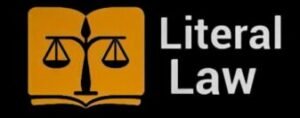New Delhi, May 8, 2025 — Chief Justice of India Sanjiv Khanna has formally forwarded a report submitted by a three-judge in-house inquiry committee, constituted to examine allegations against Justice Yashwant Varma, to the President of India and the Prime Minister. The move, while not disclosing the contents of the report, strongly indicates that the panel has found merit in the allegations of unauthorized currency discovered at Justice Varma’s official residence.
The forwarding of the report to the executive is a key step in the in-house procedure laid down in Supreme Court precedents such as K. Veeraswami v. Union of India (1991), Ravichandran Iyer v. Justice A.M. Bhattacharjee (1995), and Additional District and Sessions Judge v. Registrar General, High Court of M.P. (2015). These rulings have codified internal mechanisms for judicial accountability, including the formation of a three-judge inquiry panel when serious misconduct is suspected.
The Inquiry Process and What It Implies
Justice Varma’s case underwent all stages of preliminary scrutiny. Initially, the complaint was found prima facie credible by the CJI, who sought inputs from the Chief Justice of the concerned High Court. Upon concurrence, a three-judge panel was constituted, comprising:
- Justice Sheel Nagu, Chief Justice of Punjab & Haryana High Court
- Justice G.S. Sandhawalia, Chief Justice of Himachal Pradesh High Court
- Justice Anu Sivaraman, Judge, Karnataka High Court
The panel’s mandate was to examine whether the allegations warranted dismissal of the complaint, warranted cautioning, or required removal proceedings under Articles 124 and 217 of the Constitution.
Sources familiar with the procedure say that since the report has been forwarded to the President and the Prime Minister, it signals that the Committee found the misconduct “so serious as to call for the initiation of removal proceedings.” This also implies that Justice Varma was likely asked to resign or opt for voluntary retirement — a request he refused, leading the CJI to escalate the matter.
Judicial Work Withdrawn; Next Steps Lie with the Executive and Parliament
As per established precedent, once such a report is submitted, the judicial work of the concerned judge is formally withdrawn. The matter is then no longer within the judiciary’s internal remit but becomes subject to constitutional and legislative procedures for impeachment.
Under the Judges (Inquiry) Act, 1968, and the Constitution, the removal of a judge requires:
- Sponsorship of a motion by 100 Lok Sabha MPs or 50 Rajya Sabha MPs.
- Formation of another three-member committee by the Presiding Officer of the House.
- A report supporting the motion.
- Passage of the motion with a two-thirds majority in both Houses.
While the in-house process concludes with the CJI’s communication to the President, it does not ensure removal unless Parliament follows through.










